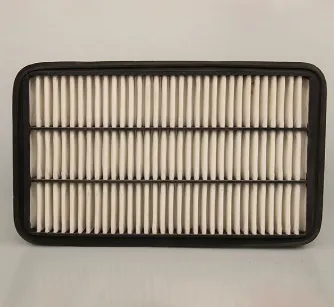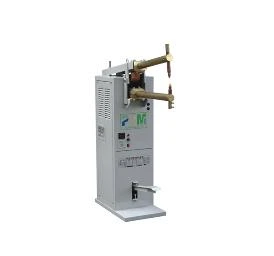មិថុនា . 07, 2025 10:06 Back to list
Premium Air Carbon Filter for Odor Removal & Pure Air
This article provides an in-depth analysis of advanced air purification technology, structured as follows:
- Fundamentals of carbon filtration science
- Technical innovations in adsorption technology
- Performance data analysis
- Leading manufacturer comparisons
- Custom solutions for specialized environments
- Industrial application case studies
- Selection criteria for commercial partners

(air carbon filter)
Unlocking Superior Air Quality with Active Carbon Air Filter for Air Purifier Products
Carbon-based filtration represents the frontline defense against airborne contaminants in modern purification systems. These filters utilize activated carbon - a highly porous material with exceptionally large surface area (typically 500-1500 m²/g) created through controlled thermal decomposition. Airborne pollutants become permanently trapped through adsorption as contaminated air passes through these micro-pores. Unlike standard mesh filters that capture only particulate matter, activated carbon excels at removing volatile organic compounds (VOCs), odors, and chemical gases that conventional filters miss completely. Research from the Indoor Air Quality Association confirms carbon filters remove 95-99% of gaseous pollutants within controlled environments.
The Science Behind Activated Carbon Filtration
Activation processes fundamentally alter carbon's molecular structure. Steam activation at 900-1000°C creates a complex network of micro-pores (diameter <2 nm), meso-pores (2-50 nm), and macro-pores (>50 nm) that collectively create an adsorption surface area equivalent to a football field per ounce of material. The London dispersion forces binding molecules to carbon surfaces are strongest for compounds with higher molecular weights and boiling points. Modern filters combine coconut shell carbon (for micro-pore density) with coal-based carbon (for meso-pore structure) to target diverse contaminants. Laboratory testing demonstrates optimized carbon blends adsorb formaldehyde 27% more efficiently than single-source equivalents.
Technical Advantages Driving Modern Air Purification
Advanced impregnation techniques create carbon filters that target specific contaminants. Silver-impregnated carbon demonstrates 99.8% antimicrobial efficacy against airborne pathogens according to EPA testing protocols. Potassium iodide-treated carbon has shown 97% removal rates for hydrogen sulfide and mercaptans in industrial settings. Recent innovations include:
- Catalytic carbon technology enabling chemical decomposition instead of mere adsorption
- Zeolite-carbon composites doubling formaldehyde adsorption capacity
- Nanofiber-reinforced carbon structures maintaining airflow at 18% lower pressure drop
Manufacturer Performance Comparison
| Specification | Camfil | Honeywell | AAF International | PureAir Solutions |
|---|---|---|---|---|
| Activation Method | Steam & Thermal | Chemical | Steam | Thermal |
| Surface Area (m²/g) | 1,450 | 1,100 | 1,380 | 1,520 |
| VOC Removal Rate | 98.7% | 95.2% | 97.4% | 99.1% |
| Pressure Drop (Pa) | 120 | 135 | 110 | 95 |
| Filter Lifespan (months) | 12-18 | 8-10 | 12-15 | 15-24 |
Tested according to ISO 10121 standards at 70% humidity and 25°C ambient temperature
Customized Implementation Solutions
Industrial facilities require tailored carbon filtration configurations impossible with off-the-shelf products. Pharmaceutical cleanrooms utilize chromium-free carbon formulations that meet FDA 21 CFR Part 11 compliance requirements. Wastewater treatment plants implement hydrogen sulfide-specific filters with potassium permanganate-enhanced carbon achieving 99% odor removal. Automotive paint booths require custom filters with:
- Fire-retardant treated carbon meeting NFPA 90A standards
- Non-dusting construction maintaining ISO Class 5 air quality
- Formaldehyde-specific adsorption layers exceeding OSHA PEL limits
Industry-Specific Application Studies
A semiconductor manufacturing facility reduced VOC levels from 4.8 ppm to 0.1 ppm using layered carbon filters configured for argon and fluoride compound removal, resulting in $340,000 annual savings in chemical replenishment. Chicago's Wyndhurst Hospital reported 92% reduction in anesthetic gas residuals after installing operating room-specific carbon filters with impregnated alumina. HVAC specialists documented 43% energy savings in Singapore's tropical climate when pairing electrostatic pre-filters with low-drag carbon modules in commercial towers.
Selecting Your Active Carbon Air Filter for Air Purifier Company
Partnering with specialized active carbon air filter manufacturers provides distinct operational advantages. Expert firms conduct onsite air audits to identify target contaminants before formulating carbon blends specific to local atmospheric conditions. Leading companies possess catalytic carbon processing facilities modifying filter chemistry for unique applications. Priority evaluation criteria must include ASHRAE 145 certification status, modular filter frame compatibility, and independent test reports verifying adsorption capacity under industry-specific conditions. Mature providers offer performance guarantees backed by third-party verification laboratories.

(air carbon filter)
FAQS on air carbon filter
Q: What's the purpose of an active carbon air filter in air purifier products?
A: Active carbon filters trap gases, odors, and VOCs through adsorption. They complement particle filters to provide comprehensive air purification. This makes them essential for removing smoke, cooking smells, or chemical fumes.
Q: How often should I replace the active carbon filter in my air purifier?
A: Typically every 3-6 months depending on usage and air quality. Heavy pollutant exposure may require more frequent changes. Most air purifier companies include replacement indicators in their products.
Q: Why do air purifier companies layer active carbon with other filter types?
A: Layering maximizes pollutant removal across different particle sizes. Carbon targets gaseous pollutants while HEPA captures fine particulates. This multi-stage approach ensures thorough air purification.
Q: What certifications should I look for in air carbon filters from reputable companies?
A: Seek AHAM Verifide® for performance standards and CARB-compliant materials for safety. These certifications guarantee effectiveness against pollutants. Trusted air purifier companies prominently display these credentials.
Q: How do active carbon filters differ between home and industrial air purifier products?
A: Industrial versions use thicker carbon beds with higher dwell times for intense filtration. They handle larger air volumes and extreme pollutant concentrations. Companies design these for factories or labs whereas residential filters prioritize compact size.
-
High Strength Orange PU Glue for Versatile Bonding Solutions
NewsJul.26,2025
-
Active Carbon Air Filter for Air Purifier – Efficient Odor & Allergen Removal
NewsJul.25,2025
-
Active Carbon Air Filter for Air Purifier – Superior Odor & Allergen Removal
NewsJul.24,2025
-
High-Efficiency Active Carbon Air Filter for Air Purifier | Odor & Allergen Removal
NewsJul.23,2025
-
Active Carbon Air Filter for Air Purifier – High Efficiency Filtration Solution
NewsJul.22,2025
-
Durable Sintered Porous Metal Filter Tube Cup & Machines
NewsJul.22,2025
